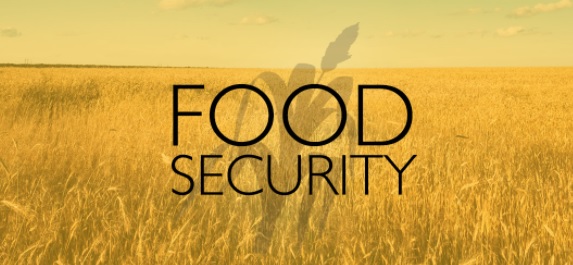Food Safety and Insider Threat
Our food is also our medicine this is why it is very important to pay serious attention to our food. Basically, the safety of our food is up to us but there are some aspects of our food safety that we may not have total control of and may require some professional attention. This is where the food and drugs agencies come in.
What is food safety?
Food safety simply refers to the process of handling, preparing and storing of food so as to prevent food- borne diseases or infections.
How is food safety done?
Since food safety has become and indispensable necessity, it is important that the right method of keeping the food safe is understood. Food safety can be done in these five ways.
- Keep clean: keeping food in a clean environment in a sure way of keeping it safe. Foods are likely to absorb many microorganisms from where they are kept. Some of these organisms do not only peach on the food, they live and begin to reproduce on the food; especially perishable foods.
- Keep the raw away from cooked: separate the raw foods from the cooked ones. This is important because raw foods especially meat and seafood contains some micro-organisms which may be harmful to the body. So when it gets to the cooked food, it can easily get to the body and may cause some illness.
- Cook thoroughly: every food has its cooked point. Do not overcook or under-cook any food. Make sure it is thoroughly cooked. This will help in preserving the food.
- Preserve in perfect temperature: some foods need to be kept in a 0degree freezing temperature while others are best kept in a fridge temperature or just in room temperature. Preserving food in the right temperature keeps it safe.
- Preserve with raw and natural materials: sometimes the preservatives used in preserving can foods are the problem to the safety of the food preserved. When these foods stay in the can for long, they become dangerous to the body when eaten. However, the danger becomes less when preserved with natural materials.
What does the Food Safety Agency do?
Food Safety and Inspection Service is responsible for inspecting and regulating the food that is being consumed. They see to the hygiene and safety of foods. They job they do helps keep the consumers safe by making sure that the food they consume do not cause any harm to their body.
What is insider threat?
Insider threats are some employees are other people within the work environment what can cause some harm or damage to the organization directly or indirectly. It can also be seen as the misuse of an access credential of an organization.
Most times, organizations focus more on external threats but insider threats constitute the percentage of cyber security threats suffered in many organizations. Though some of these threats are not carried out intentionally but either ways, they cause heavy damage to the organization as it affects their integrity, confidentiality, and market competitive advantage.
Types of insider threats
- The unaware insider: this category of insider is the organization’s regular employee who has no intention of causing any harm to the organization but because of negligence and lack of carefulness exposes the organization to harm and they do that through these ways:
- Misdirected Emails: At one point or the other we might have sent mail to the wrong recipient. Sometimes this seamless little error can cause an organization direly as some emails might contain sensitive data and is meant only for the specified recipient. It can be very difficult to recall such emails exposing the company's data.
- Phishing: Scammers often deploy phishing attacks and other social engineering tactics in order to breach organizations and gain access to confidential data or to try and use a network of a particular organization to carry out wire transfer and all that. If a staff member were to be a victim of this, it might have adverse effects for an organization.
- Third party agency: when a third party agency much like a vendor or contractor has a very weak and less secured portal, information shared with them might be at risk as they can easily experience data breach.
- The intentional or the malicious insider: These sets of insiders are out to cause harm to the organization mostly because they have an axe to grind with the organization. This might be as a result of layoffs, demotion, salary reduction or personal issues with top management. These are some ways the malicious insiders operate:
- Competitive Edge: Aggrieved staff members might use an organization's data in their possession to get a much better deal with a new firm. This may include client list, operations tactics, and new product patent and other organizational secrets.
- Financial incentive: Data brokering is a very lucrative industry, estimated to be worth over $200 billion. Some individuals will take advantage of this offer and sell good and important information of their organization for their financial gain.
- Revenge: a staff may have a bone to pick with an organization and will pose and a candidate for an employment in the organization and once they get the job, they will execute their revenge plan by exfiltration of their data.
Relationship between food safety and insider threat
One of the easiest ways to jeopardize the health of any living thing is through the food. When the human food is contaminated, it is very easy for the person to fall sick after eating the food. Keeping foods healthy is a sure way to maintain a healthy living, a healthy workforce and a lively organization.
Insider threats intentionally or unintentionally involve in some practice or give out some information that may bring harm to the people who eat the food.
Some these practices may include:
- Not carefully examining the food as instructed: an employee who is in charge of food inspection in an organization may carelessly inspect a food and certify it as healthy and safe, while it is not. This type of inspection will likely cause the organization a huge damage because when an external body gets to this food, they will find it not safe and they organization will have to pay for it. Secondly, it may cause harm to people who ate them and they might decide to file a law suit.
- Giving out vital information: some information about the processing and preserving of some foods are better kept confidential. When an employee (intentionally or unintentionally) gives out such information, they have endangered the security of the organization.
By James Kimmel, Director of Operations
Strategic Security Corp.



